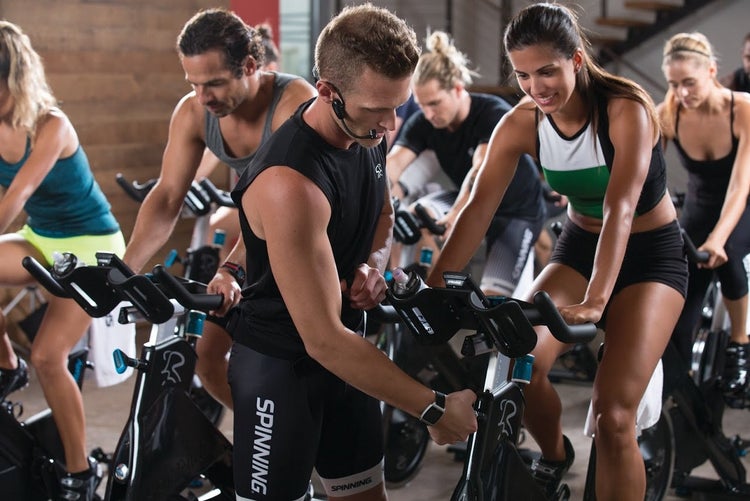Four Tips to a Perfect Bike Setup

When you feel extra pumped about your cycling workout, it can be tempting to just hop on a bike and go, but it’s worth it to take a few minutes to set up your bike correctly. Stationary bikes, perhaps more than any other piece of cardio equipment, need to be adjusted for an individual’s unique height and proportions.
A proper setup is important, both for your comfort and the efficacy of your workout. You may not feel the effects of wrong settings immediately, but halfway through your workout – and in the hours beyond – you’ll likely notice that you were hunched over a bit too far or had your knees bent at too sharp an angle — and improper form can lead to injuries and pain over time.
Adjusting your bike is not as hard as you may fear. Here are a few easy-to-remember guidelines to get you in the saddle, which you should consider making before you begin your next ride.
1. Saddle Height
To determine the right saddle height, stand next to the bike with your feet flat on the floor. Adjust the saddle up or down until it is level with the top of your hip bone. To further perfect the adjustment, get on the bike and place your feet on the pedals.
Put your heels on the bottom of the pedals and turn them until one is at the highest point and the other is at the lowest point of the pedal stroke. At this position, the knee of your lower extended leg should be slightly bent, not fully extended.
2. Foot Position
If you’re new to cycling and don’t have specialized shoes that clip onto the pedals, you’ll need to use the built-in straps or foot cages.
Slide your sneaker into the strap or cage one foot at a time. Tighten the restraints until your shoes are held snugly in place. The pedal should fall squarely under the ball of your foot.
3. Distance from Saddle to Handlebars
Your saddle slides backward and forward to change your position relative to the pedals and handlebars. With your feet on the pedals, rotate them until they are at the same height (a line drawn through both feet will be parallel to the ground).
Look at your front foot and imagine that a weighted string is hanging from your kneecap. Adjust the position of your seat forward or backward until the imaginary string falls right over the ball of your foot.
If your knee is bent beyond the ball of your foot, you need to move the saddle backward. If your shin is at a 90-degree angle to the ground or falls behind your ankle, you need to move the saddle forward. Properly setting up your saddle helps prevent added stress on your knees and other joints, which can lead to pain.
4. Handlebar Position
Handlebar placement is important because it can either minimize or add to the amount of back and neck strain you experience. Fortunately, when saved for last, finding the correct handlebar height may be the easiest adjustment you make. The go-to guideline is to adjust the handlebars to the same height as the saddle, but it’s not a hard and fast rule. Depending on your flexibility and body type, you may want to position the handlebars slightly higher or lower than your seat. Make adjustments until you can comfortably grip the handlebars.
Once your bike is set up, make sure you ride with proper form. You want to keep a neutral spine, avoid hunching, and look straight ahead without arching your neck. Don’t tuck your shoulders up by your ears, keep a slight bend to your elbows, and maintain a relaxed grip on the handlebars. Remember, you should be fairly comfortable during your ride and not feel any excessive strain on your muscles, particularly in your back, neck, or knees.
Now, pat yourself on the back because you’re done! Don’t be afraid to ask a trainer or class instructor to check your work, and enjoy the cardio thrill ride that is indoor cycling.